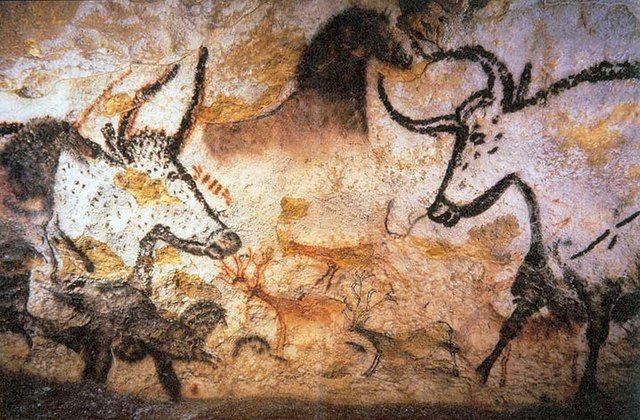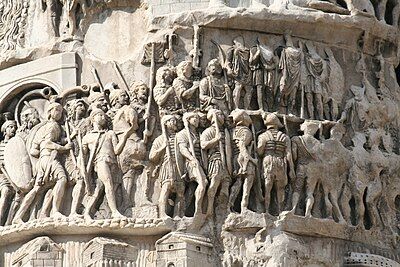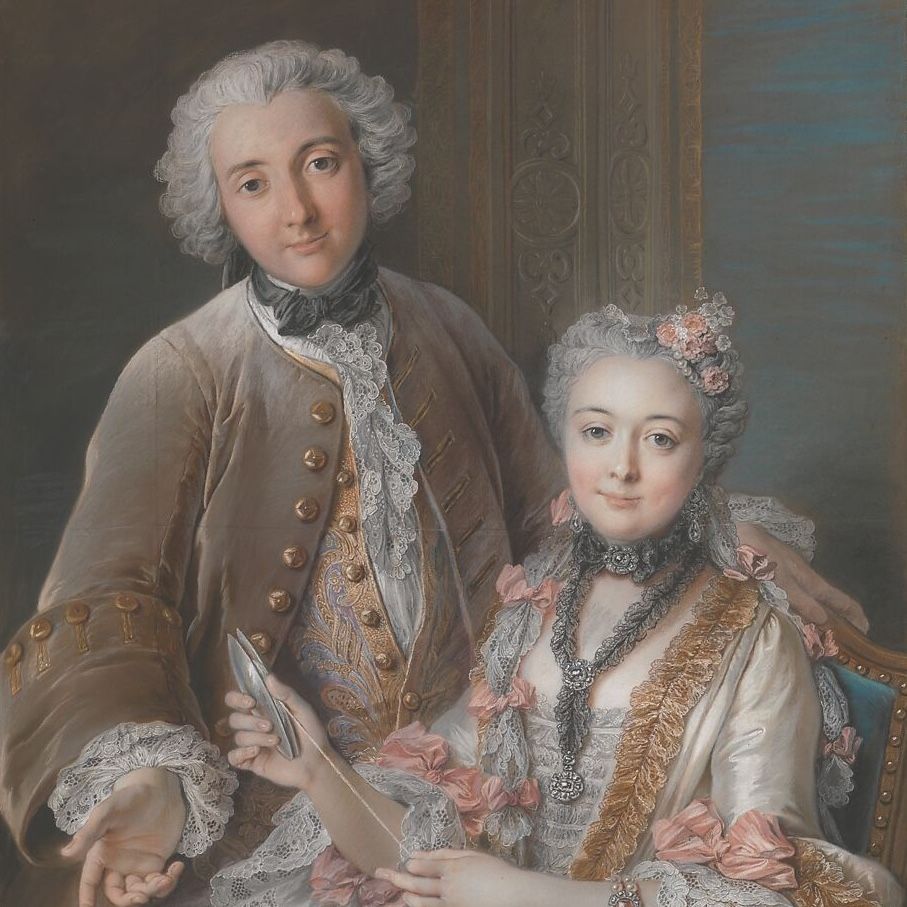
DOCENT PICK
What is new with Figuration?
21/07/2024
Docent is delighted to present its first short course and curated selection of works on contemporary figuration. Over the past five years, figuration has made a remarkable comeback after a prolonged period of fascination with abstraction, the movement traditionally considered its counterpart in art history.
This capsule is made for you to dive deeper in the realms of figurative compositions. It explores all its facets and techniques, offering a comprehensive understanding of the evolving landscape of contemporary figuration.
The capsule aims to engage into a dialogue between the historical roots of figuration and the new perspective of our current scene.
This capsule is made for you to dive deeper in the realms of figurative compositions. It explores all its facets and techniques, offering a comprehensive understanding of the evolving landscape of contemporary figuration.
The capsule aims to engage into a dialogue between the historical roots of figuration and the new perspective of our current scene.
Historical Roots
Figuration has a history spanning over 20,000 years, dating back to the earliest compositions found in the Lascaux cave paintings. Painting has served as a means for humanity to celebrate and commemorate significant events.
More importantly, from its inception, painting has been a profound way for us to comprehend ourselves. By projecting our existence onto a surface, we gain a deeper understanding of our minds, emotions, and thoughts.
More importantly, from its inception, painting has been a profound way for us to comprehend ourselves. By projecting our existence onto a surface, we gain a deeper understanding of our minds, emotions, and thoughts.

These early artworks from Lascaux were also believed to hold spiritual or magical significance, often related to hunting, fertility, and survival.
Centuries after centuries, painting has played a significant role in structuring spirituality our society. Figuration became a way to catalyze religious devotion.
Centuries after centuries, painting has played a significant role in structuring spirituality our society. Figuration became a way to catalyze religious devotion.

During the medieval period, figuration was predominantly used for religious purposes. Christian iconography, Byzantine mosaics, and Gothic cathedral frescoes were created to inspire devotion and convey biblical narratives to largely illiterate populations.

Figuration also played a crucial role in political propaganda. Roman emperors, for instance, commissioned statues and reliefs that glorified their reign and military victories, thereby reinforcing their authority and influence over the populace. Above is a section and details of the Column of Marcus Aurelius, created in Rome around 177–180 AD, with scenes from the Marcomannic Wars.

This painting by Benozzo Gozzoli, entitled "Journey of the Magi," was executed between 1459 and 1462. The magnificent fresco depicts the procession of the Magi from the East paying homage to the Christ Child, showcasing the celebrated Medici family of Florence in all their pomp and elegance. From the late Renaissance up to the 18th century, figuration often served the purposes of social commentary or individual propaganda. Portraits became increasingly prevalent, frequently honoring the patrons who commissioned them, like the below work created by Charles Antoine Coypel in 1743. The sitters are traditionally identified as Marie Elisabeth de Séré de Rieux and her husband François de Jullienne.

"So, what is new with figuration?" you may ask. In the following works, you will discover pieces that, in many respects, feel more relatable to us. Despite their contemporary appearance, their inspiration and emotions are deeply connected to human concerns and feelings that have existed since the time of the Lascaux cave paintings.
Catching your eyes
Figuration has always captivated us with its ability to instantly evoke intense emotions, memories, and projections. This sudden wave of ideas and sensations has been fully embraced by figuration over the centuries, continuing to this day.
Often, it is color that plays the role of a sensory activator. The use of vivid colors and strong contrasts between complementary colors characterizes many recent works and fascinates artists, who see in it a way to swiftly capture the viewer's attention.
Often, it is color that plays the role of a sensory activator. The use of vivid colors and strong contrasts between complementary colors characterizes many recent works and fascinates artists, who see in it a way to swiftly capture the viewer's attention.
In these two works by Alex Foxton and Katherine Bradford, the colors are bold. They immediately capture our attention and immerse us in a distinctive atmosphere that feels both familiar and strange.
Both artists are renowned for the vibrancy of their palettes, which convey a sense of reverie and a feeling of spontaneity and imbalance in each of their subjects. In Bradford's work, it is the oceanic blue that the artist adores, evoking a sense of tranquility. In Foxton's work, warm colors often dominate, such as the almost fiery green here, which seems to mimic radiant skin, imbuing the subject with an almost sacred quality.
Both artists are renowned for the vibrancy of their palettes, which convey a sense of reverie and a feeling of spontaneity and imbalance in each of their subjects. In Bradford's work, it is the oceanic blue that the artist adores, evoking a sense of tranquility. In Foxton's work, warm colors often dominate, such as the almost fiery green here, which seems to mimic radiant skin, imbuing the subject with an almost sacred quality.
The young French artist Adam Bilardi harnesses the vibrant power of figuration through color. In this painting, the red, green, and purplish-blue form a perfect chromatic triangle on the color wheel, creating intense color contrasts. Caught in this interplay, our brain feels drawn into the scene, almost participating in the tense exchange where two men struggle.
Even though the scene presents itself as straightforward and almost liminal, the contrast of colors enhances its profoundness and intricate layers.
Even though the scene presents itself as straightforward and almost liminal, the contrast of colors enhances its profoundness and intricate layers.
Continually contemplating questions of size and format as potent physical forces, Azize Ferizi adeptly represents bodies that occasionally find themselves awkwardly imposed in the social space, predestining their roles in harmony with the canvas itself. Here, devotion is distilled to its essence through the representation of clasped hands.
Celebrating Drift
The use of bold colors and striking contrasts also recalls another fascination shared by contemporary figurative painters: translating the current atmosphere of drift, doubt and distress that the young generations are currently experiencing.
Amidst uncertainty, the ecological crisis, the disorientation caused by social media, and the enduring impact of complex political histories, younger generations face unprecedented challenges in understanding their world. Figurative painters appear to capture this sense of "drifting" in their work.
Amidst uncertainty, the ecological crisis, the disorientation caused by social media, and the enduring impact of complex political histories, younger generations face unprecedented challenges in understanding their world. Figurative painters appear to capture this sense of "drifting" in their work.
Elizabeth Glaessner's dream-like paintings conjure a surreal universe uninhibited by conventional boundaries. In this imagined realm, fluid figures populate amorphous landscapes where both person and surrounding are in a seemingly constant state of metamorphoses.
Dodiya’s paintings, assemblages and sculpture-installations embody a passionate, sophisticated response to the sense of crisis he feels, as an artist and as a citizen, in a transitional society damaged by the continuing asymmetries of capital yet enthused by the transformative energies of globalization.
An urgent medium
"Figuration is 'urgent,' as curator Hans Ulrich Obrist asserts. This urgency stems from the necessity for identity, representation, and legacy, countering past invisibilities of certain social groups and nations. Depicting those who have historically been overlooked is a form of advocating for their right to self-determination.
Among those marginalized by traditional figurative painting are Black people.
In contemporary figurative painting, there is a concerted effort to depict Black individuals authentically and prominently. Artists explore themes of identity, culture, and social justice, aiming to provide visibility and representation that challenges historical marginalization.
Conversely, traditional art often perpetuated stereotypes or marginalized Black figures, contributing to their invisibility within mainstream narratives. This disparity underscores the importance of contemporary figurative painting as a platform for diverse representation and empowerment.
In contemporary figurative painting, there is a concerted effort to depict Black individuals authentically and prominently. Artists explore themes of identity, culture, and social justice, aiming to provide visibility and representation that challenges historical marginalization.
Conversely, traditional art often perpetuated stereotypes or marginalized Black figures, contributing to their invisibility within mainstream narratives. This disparity underscores the importance of contemporary figurative painting as a platform for diverse representation and empowerment.
Figuration is also urgent due to its ability to confront challenging issues that are often difficult to discuss and emphasize their immediacy.
Painter Jessie Homer French has developed a series of works addressing the global ecological crisis. Through powerful imagery and a straightforward visual language, he confronts us with stark realities.
Painter Jessie Homer French has developed a series of works addressing the global ecological crisis. Through powerful imagery and a straightforward visual language, he confronts us with stark realities.
What is next?
Perhaps asking ourselves what is new in figuration leads us to artists who project themselves into the past to shape today's artistic landscape.
Whether through the adoption of ancient painting techniques or the selection of traditional subjects for inspiration, certain artists actively seek to imbue their work with a sense of legacy.
Contemporary art continually seeks its next phase of evolution: new techniques, subjects, and revelations. Since the advent of modern art, there has been a fear of repetition, yet artists consistently resist this notion. It is therefore logical that artists increasingly explore myths, legends, and ancient imagery.
Whether through the adoption of ancient painting techniques or the selection of traditional subjects for inspiration, certain artists actively seek to imbue their work with a sense of legacy.
Contemporary art continually seeks its next phase of evolution: new techniques, subjects, and revelations. Since the advent of modern art, there has been a fear of repetition, yet artists consistently resist this notion. It is therefore logical that artists increasingly explore myths, legends, and ancient imagery.
Xiaoze Tie is known for his poetic representations of ancient books and manuscripts. Xie immortalizes manuscripts and their contents to stress their continued relevance. His artworks preserve material remnants of our histories, reminding us of what has transgressed. Amidst our heated political climate and the near-relentless stream of information we receive through screens, Xie’s captivating paintings and photographs give us pause to stand still and reflect.
Sandra Gamarra explores within her the mystical experience of art through works that delve into themes of perception, veneration, and cultural appropriation in her native country, South America.
With the three works below, Docent has curated a specific
Intimacy Forward
Intimacy in figuration evokes a profound connection with the spectator, inviting them into a tranquil and solitary atmosphere. Through nuanced expressions and tender gestures, figurative artists capture moments of introspection and emotional depth. These works create a sense of closeness and empathy, drawing viewers into intimate narratives that resonate with universal human experiences. With the three works below, Docent is inviting you to experience this sensation of calm introspection.